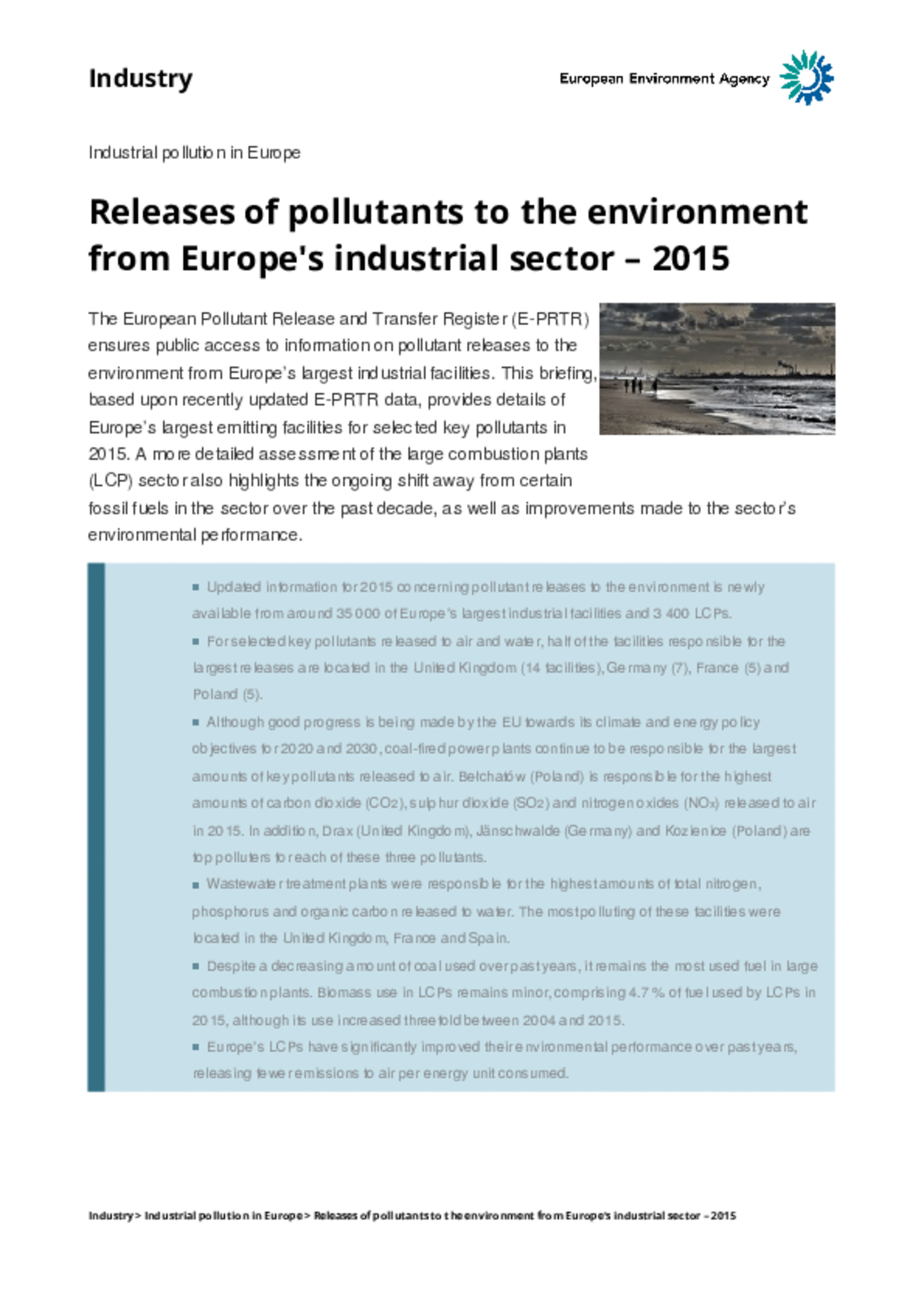All official European Union website addresses are in the europa.eu domain.
See all EU institutions and bodiesBriefing 8/2017
The European Pollutant Release and Transfer Register (E-PRTR) ensures public access to information on pollutant releases to the environment from Europe’s largest industrial facilities. This briefing, based upon recently updated E-PRTR data, provides details of Europe’s largest emitting facilities for selected key pollutants in 2015. A more detailed assessment of the large combustion plants (LCP) sector also highlights the ongoing shift away from certain fossil fuels in the sector over the past decade, as well as improvements made to the sector’s environmental performance.
ISBN: 978-92-9213-873-8

